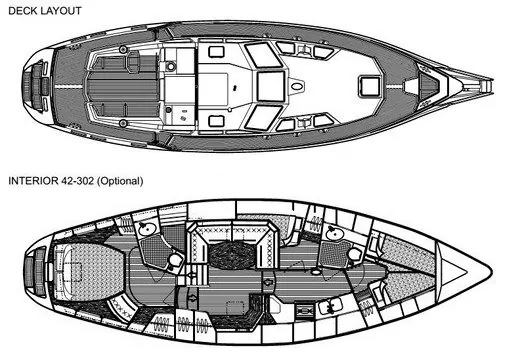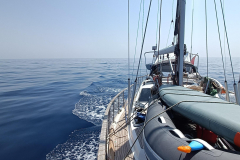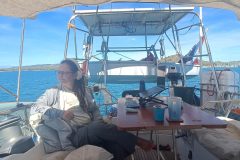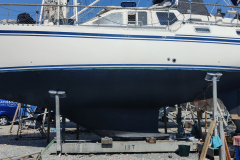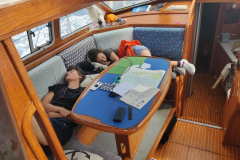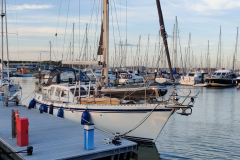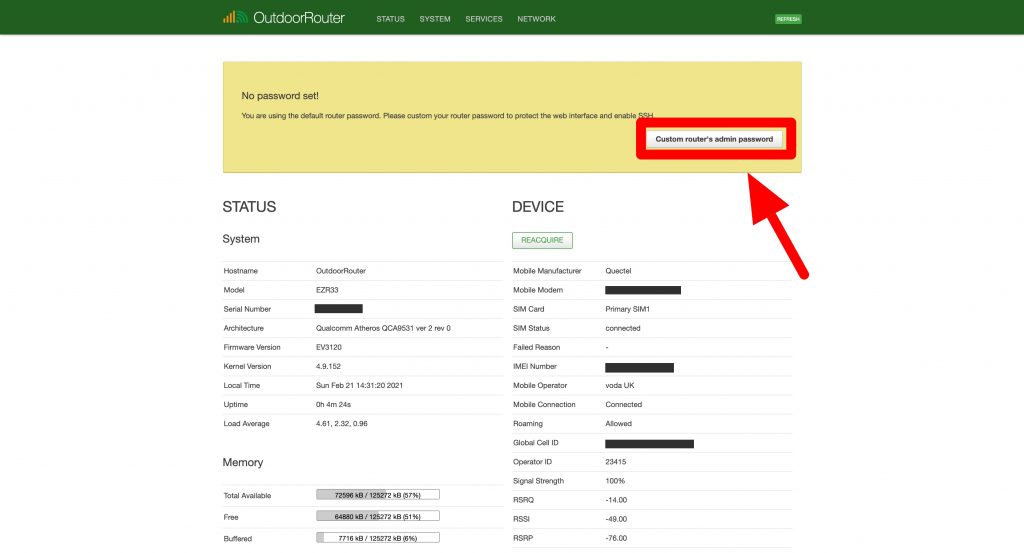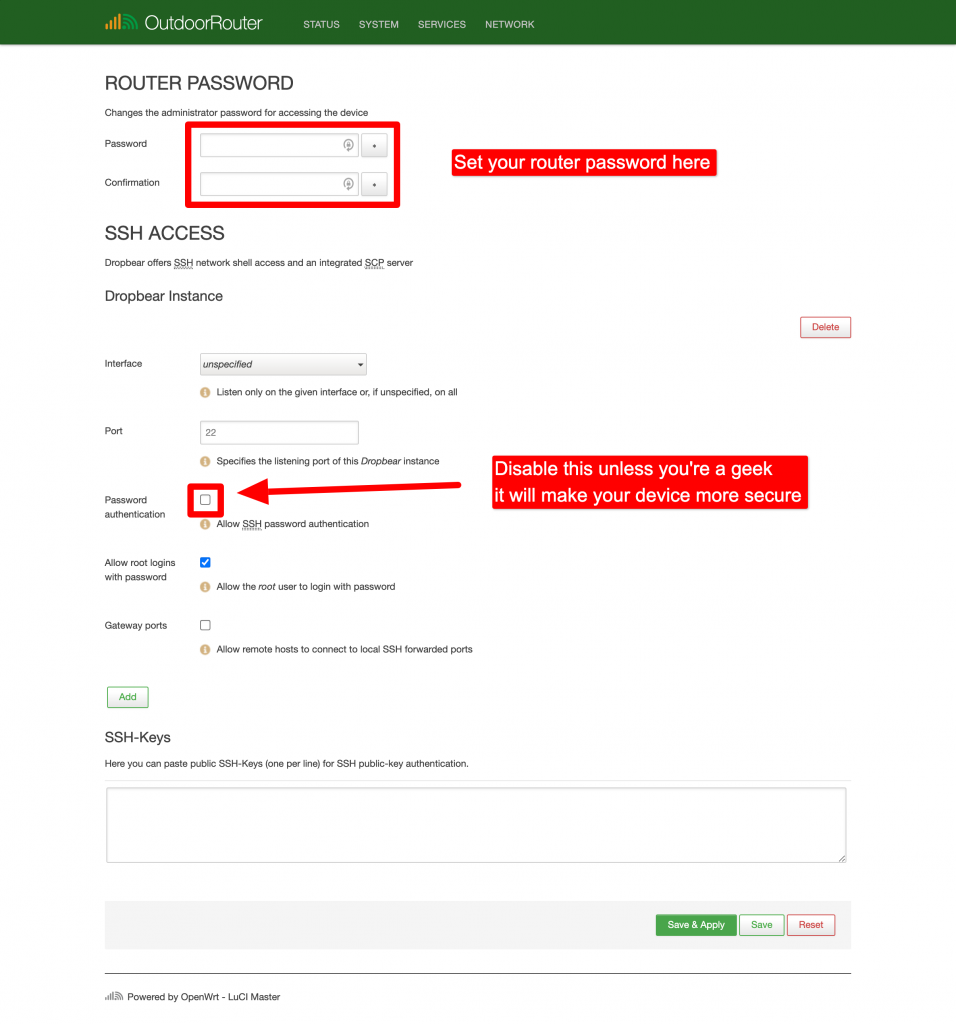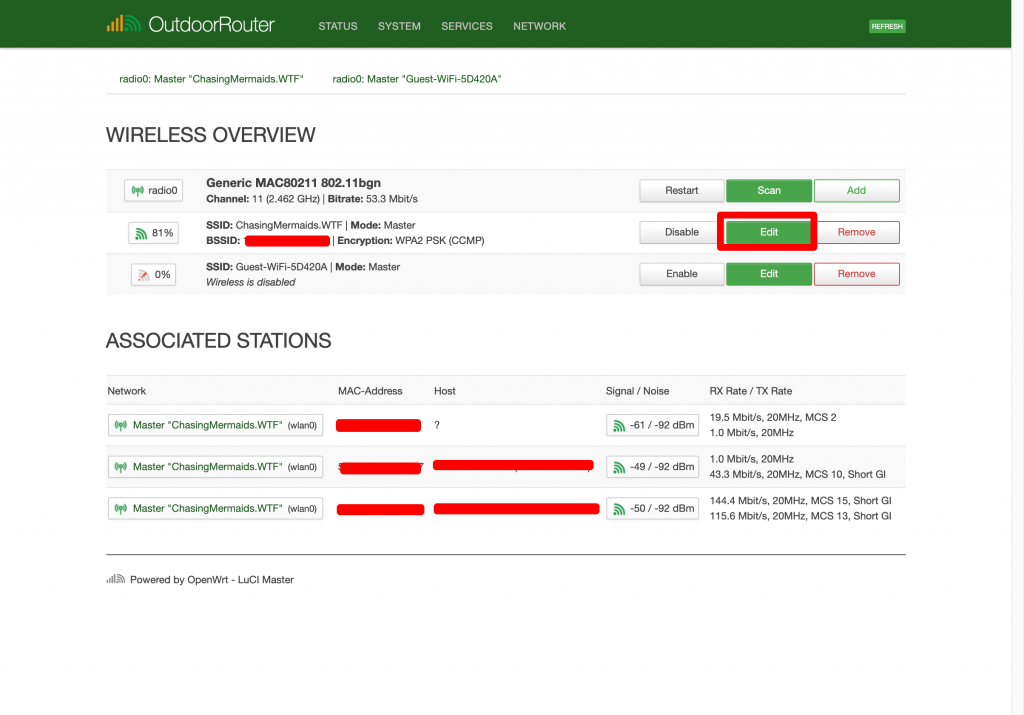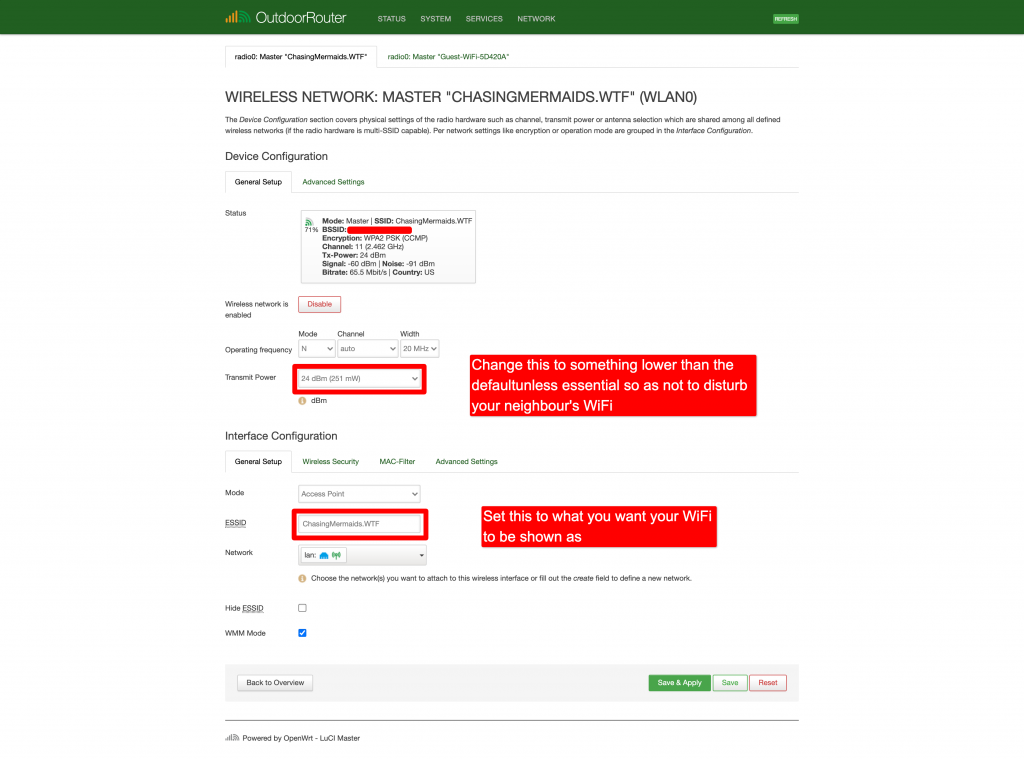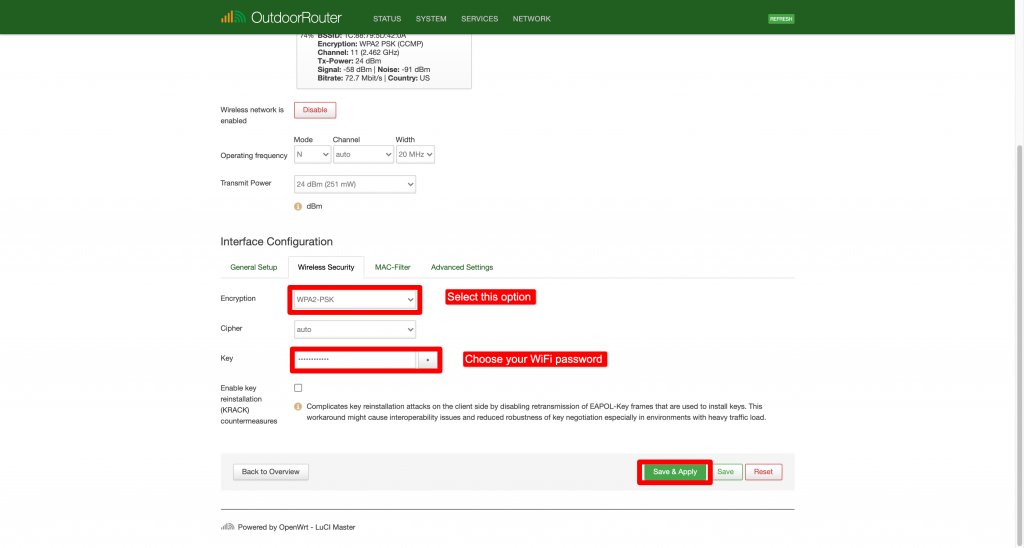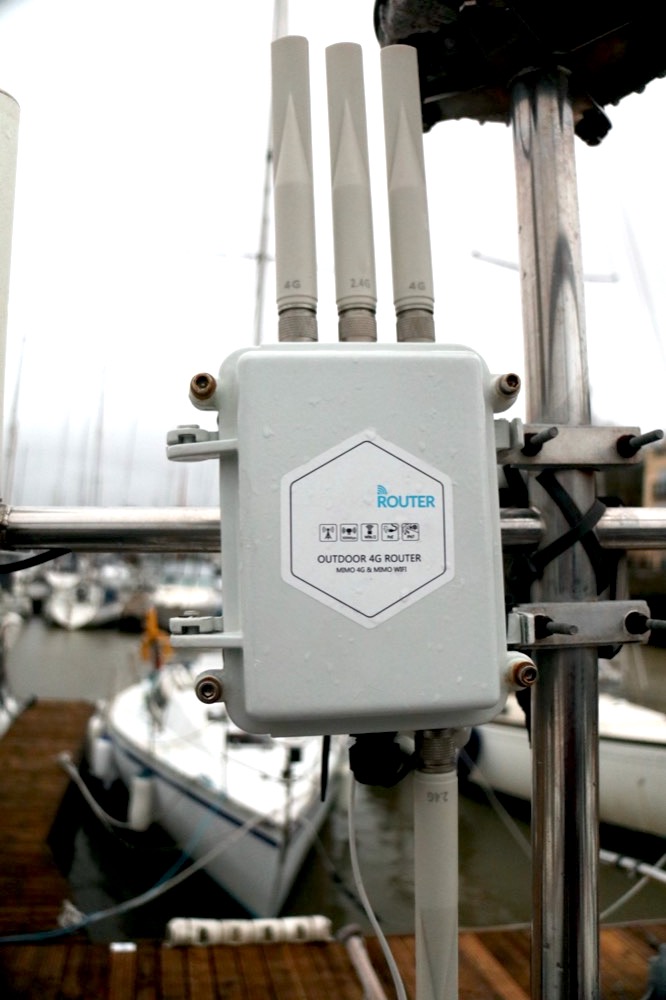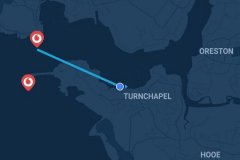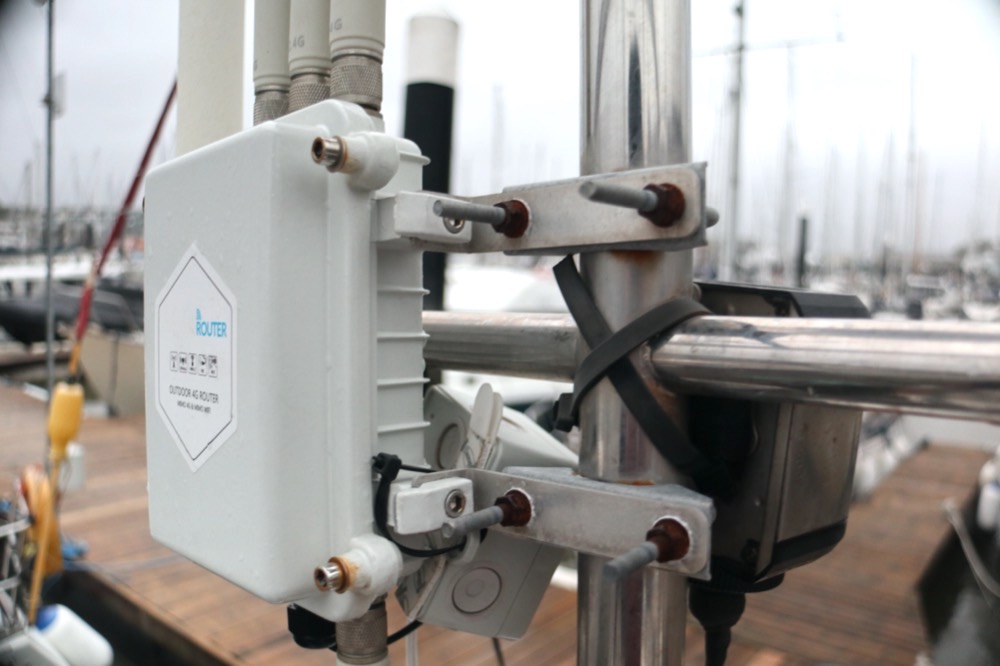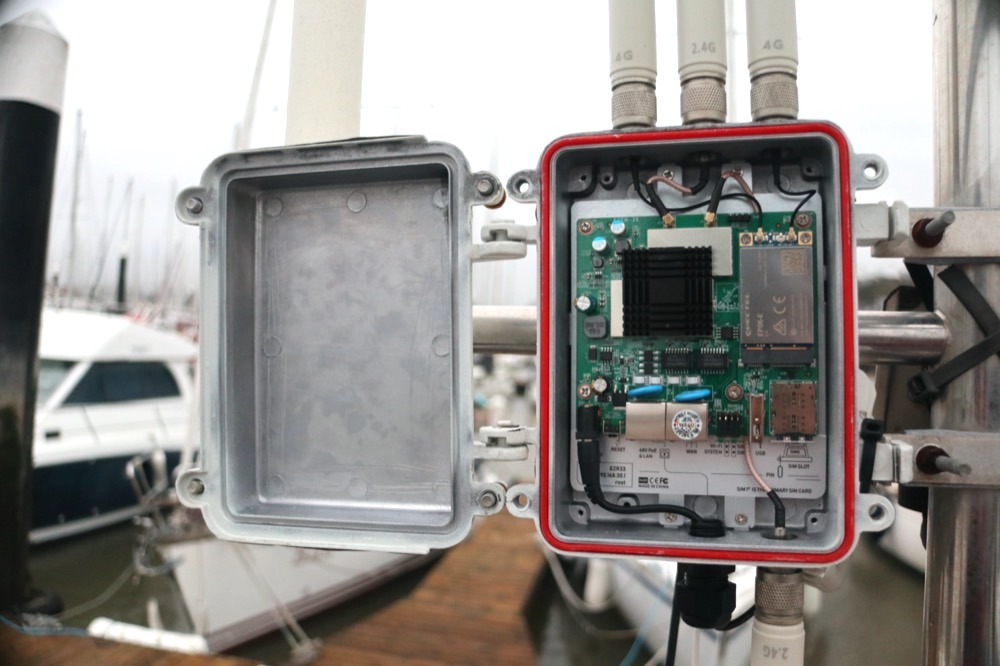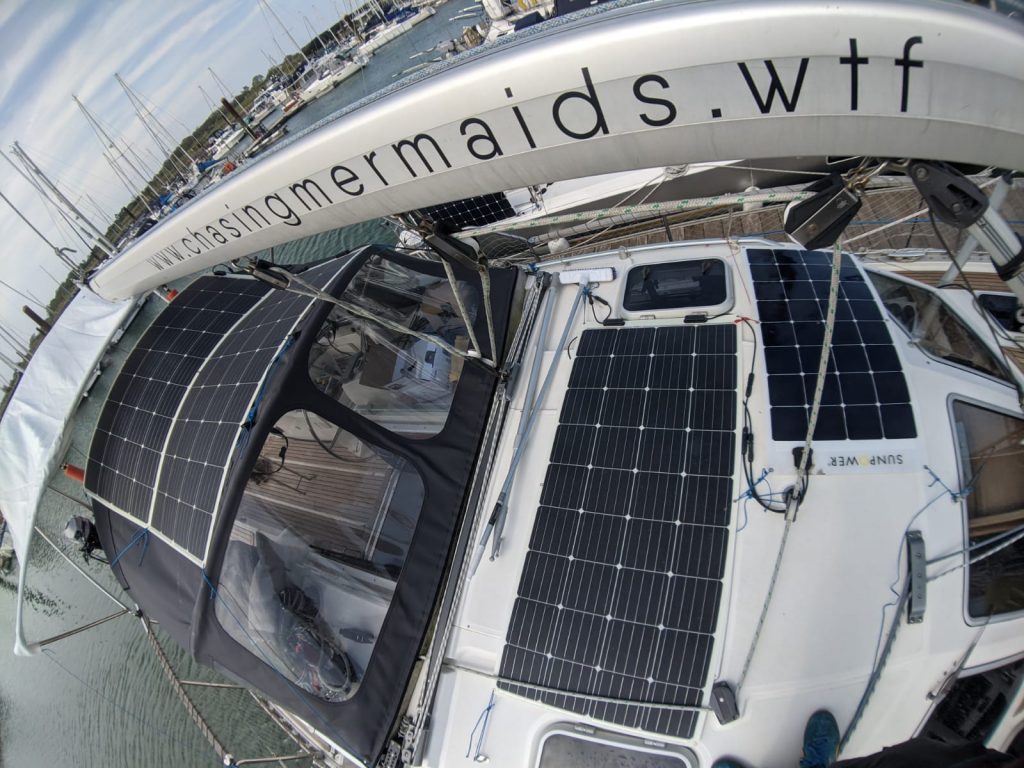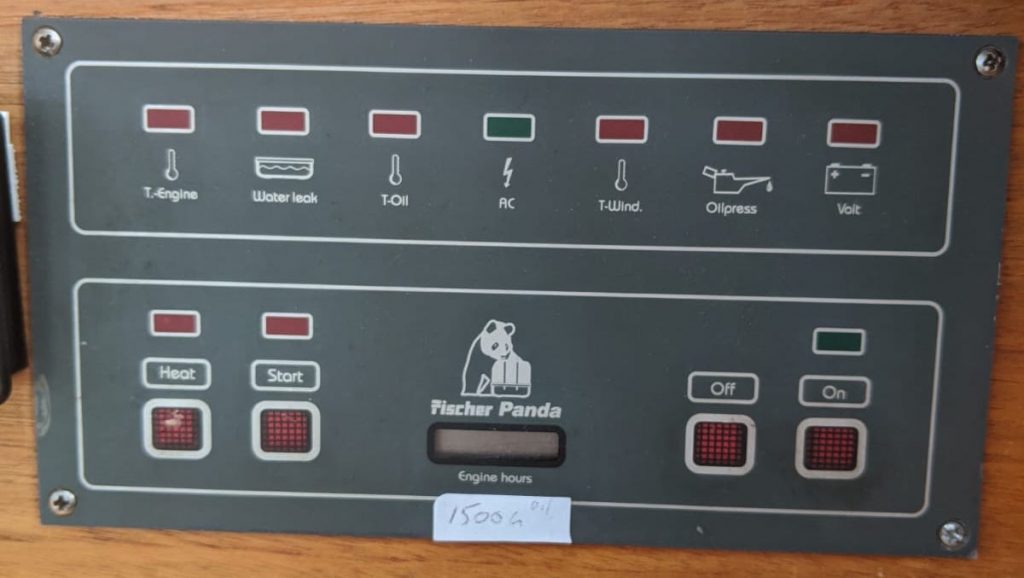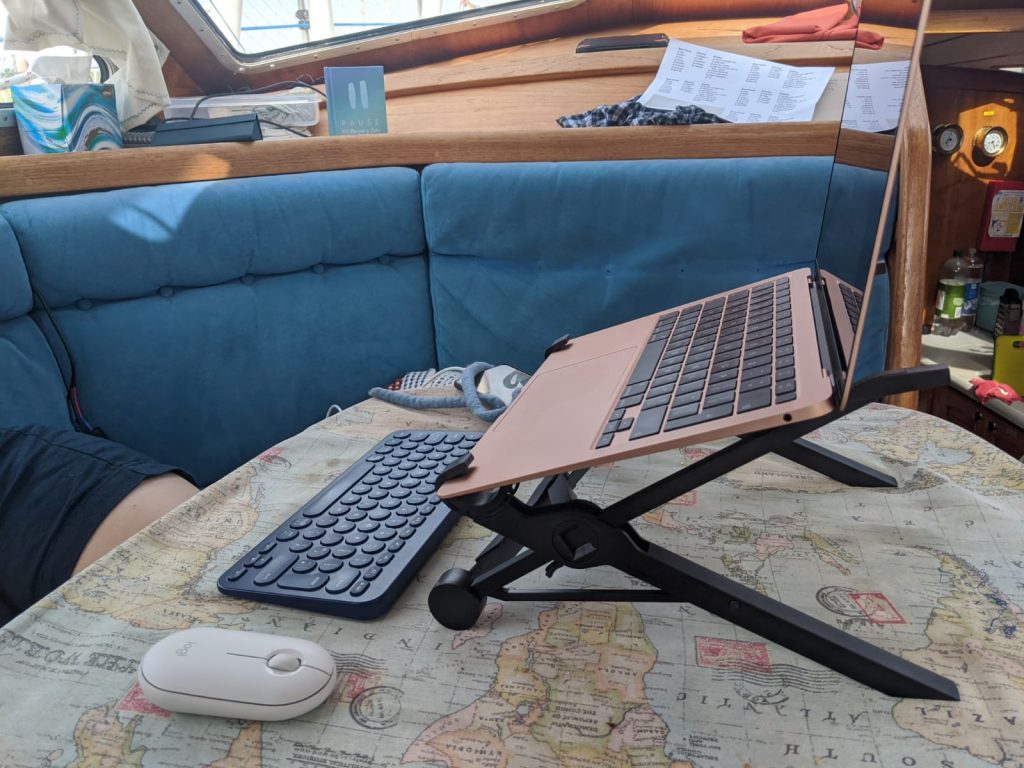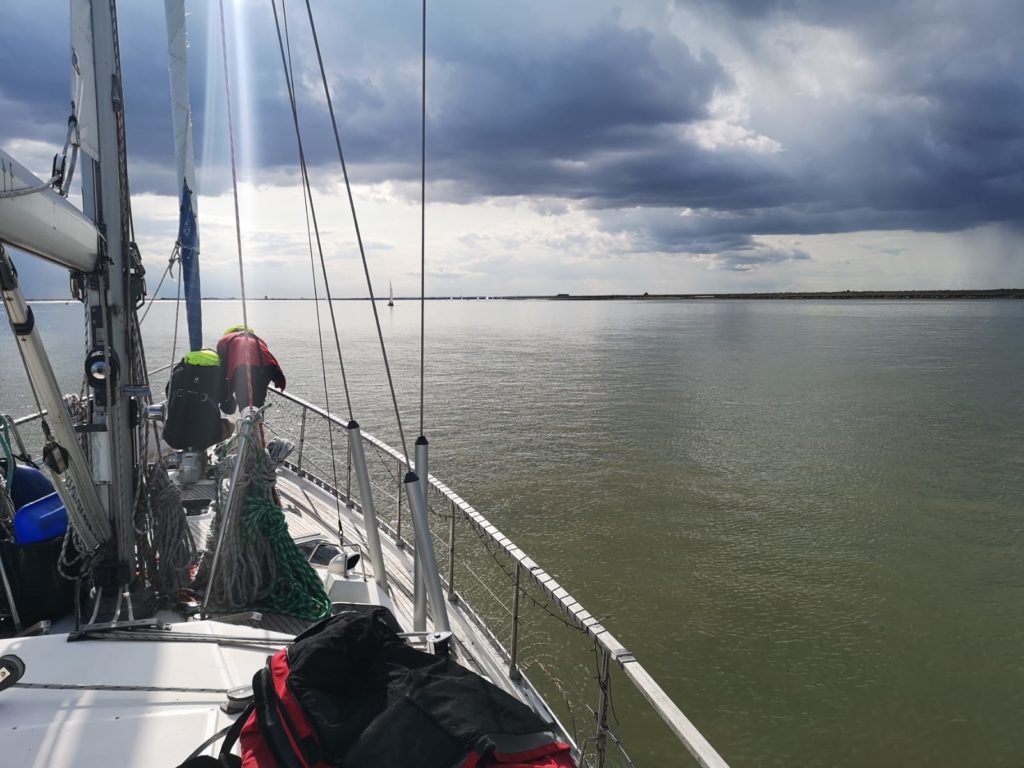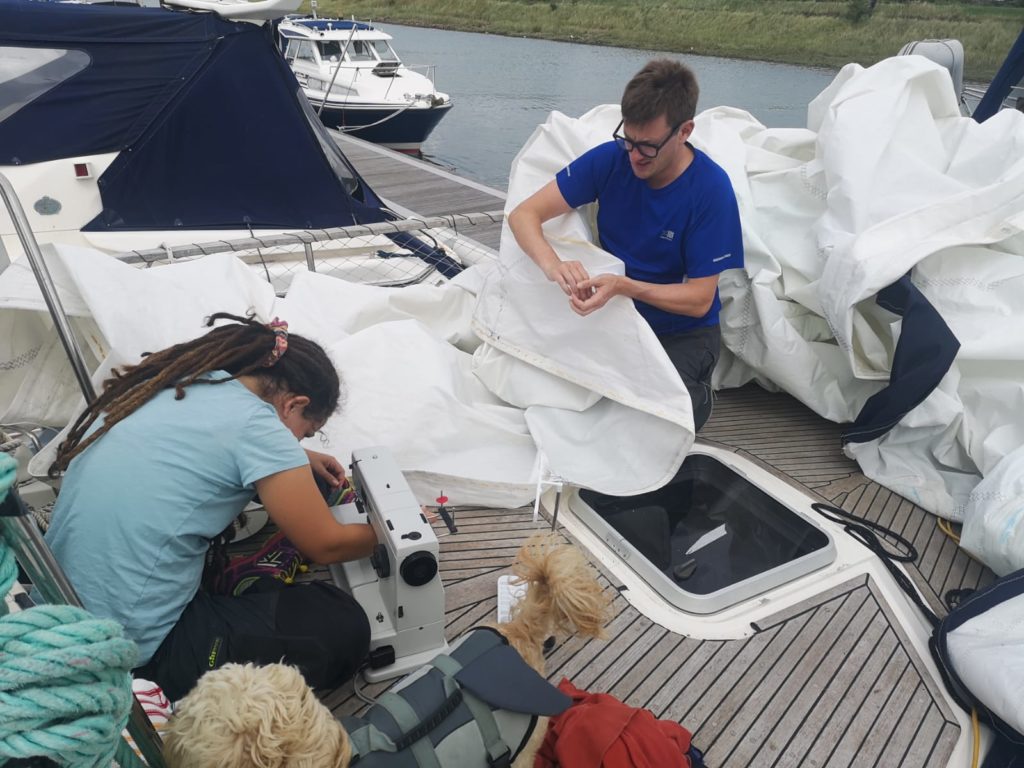
After owning the 3d Tender 320 Ultimate RIB since last summer I thought I’d write up a full review. We did a lot of research while we were saving up and trying to figure out what we wanted the RIB to be able to do.
Our requirements
- {Size} Fits onto the foredeck (Max 3.2m)
- {Lifting points} To hoist it onto the foredeck
- {Weight} Potentially light enough to hang on our davits (max 90KG ±200lb)
- {Capacity} Big enough to be able to carry 3-4 people and kite gear
- {Strength} Hard hull to reduce damage on beaches
- {Capable} Good for adventures near or far
Ultralight Aluminium RIB options
We’d ruled out pure inflatables i.e. inflatable v-hulls because of {Strength}. That left either fibreglass or aluminium hulls. Our old Zodiac RIB was fibreglass and weighed 95KG and it needed to be a lot lighter to come in under 90KG w/outboard.
There are two basic options in the aluminium v-hull group of ‘ultralight’ RIBs:
- Minimal: Single skin, no locker
- Some extras: Single/double skin bottom and a locker / locker + inbuilt fuel tank
We didn’t originally plan on going for the locker option but for 3D tender but I ended up going for and don’t regret it.
If you’re in a RIB in rough weather trying to travel quickly you don’t want your anchor able to shift around!
Here were the options we found:
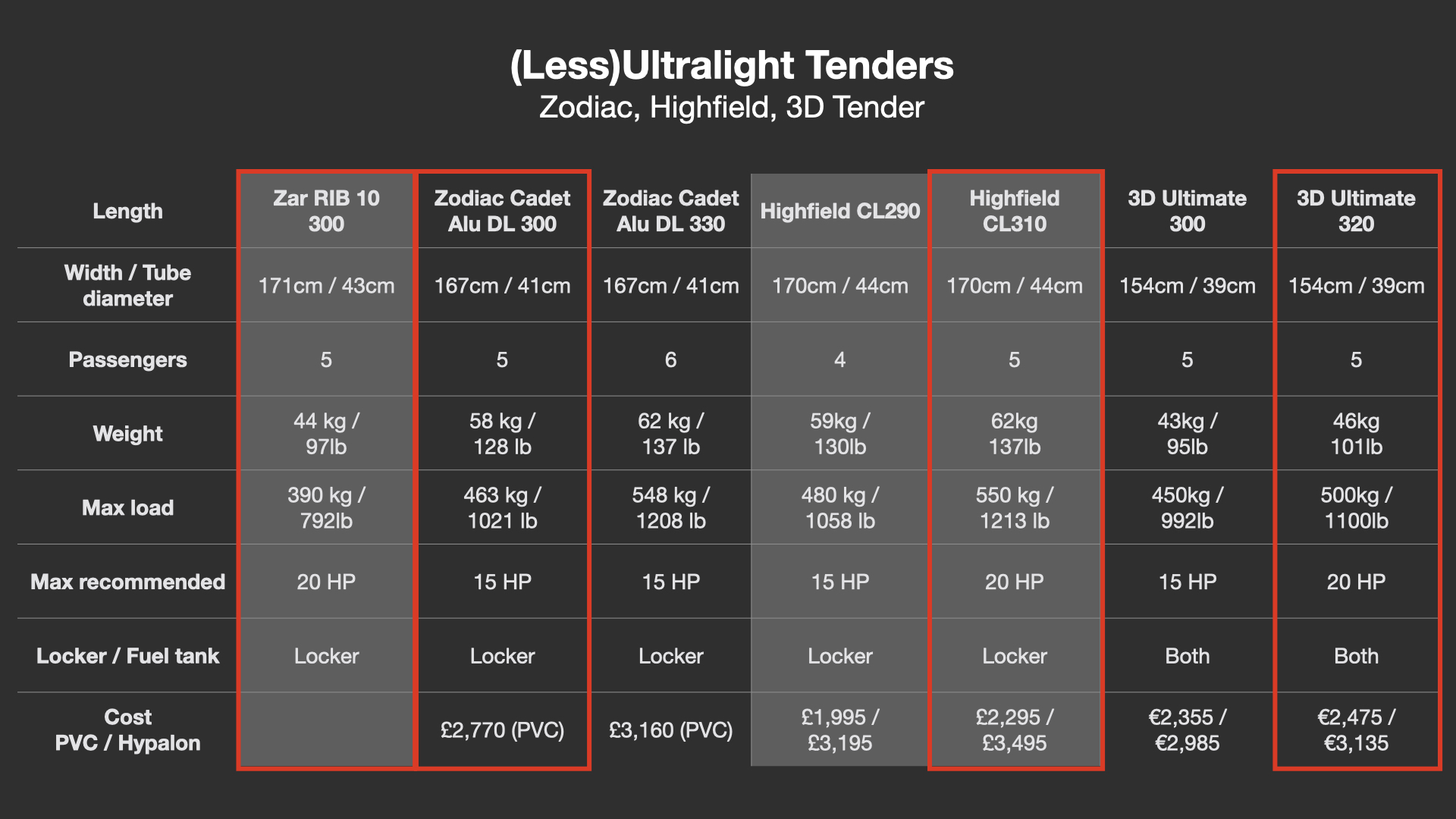
We were very much on the fence as to go for the 300 or 320 but given the small weight difference, we went for the 320.
If you were sailing on your own, I’d definitely consider going for the lighter locker free option from 3D. It’s 12KG (26lb) less so much easier to handle solo.
First look
Overall this is an attractive dinghy. In fact so much so that quite a few people have commented on it. This worries me because anything that looks ‘cool’ in my experience ends up being stolen if you’re not extremely careful. We always cable lock or more when leaving it.
I’ve covered everything in detail below but here are the high level pros & cons.
Unexpected pros
- {Handling & stability} Remarkably better than our old Zodiac Cadet
- {Transom} Low enough that our 3.5HP outboard can make it plane consistently
- {Weight} It’s quite a big dinghy, but one person can launch/recover and shift it (with a bit of effort) around the deck
Disappointing cons
- {Dinghy pump tube} Broke almost immediately, cheap and brittle, pump is ok though
- {Paintwork} Beginning to see blisters, it spends about 30-50% of its time in the water
- {Bung} Opening of the top skin is a little small to make taking out/putting it in easy
- {Fuel cap} Too hard to put on, not sturdy enough to last
- {Too nice} It might be too nice for someone to resit stealing
Handling, outboards & weight
I hadn’t ever really thought of the handling of a RIB to be possible to change much but this one shows that’s not the case.
Stepping in and out of the dinghy is significantly more stable that our old RIB. While under power it also feels more in control despite being almost half the weight.
Outboards & Top Speeds
In terms of outboards we have a 3.5HP and a new fancy Tohatsu 20HP EFI both are good at their respective jobs.
With one person the 3.5HP will plane in calm conditions. Unlike our old Zodiac and a friends v-hull inflatable the 3.5HP stays fully in the water when on the plan. This means it is a viable outboard option for light or slow trips.
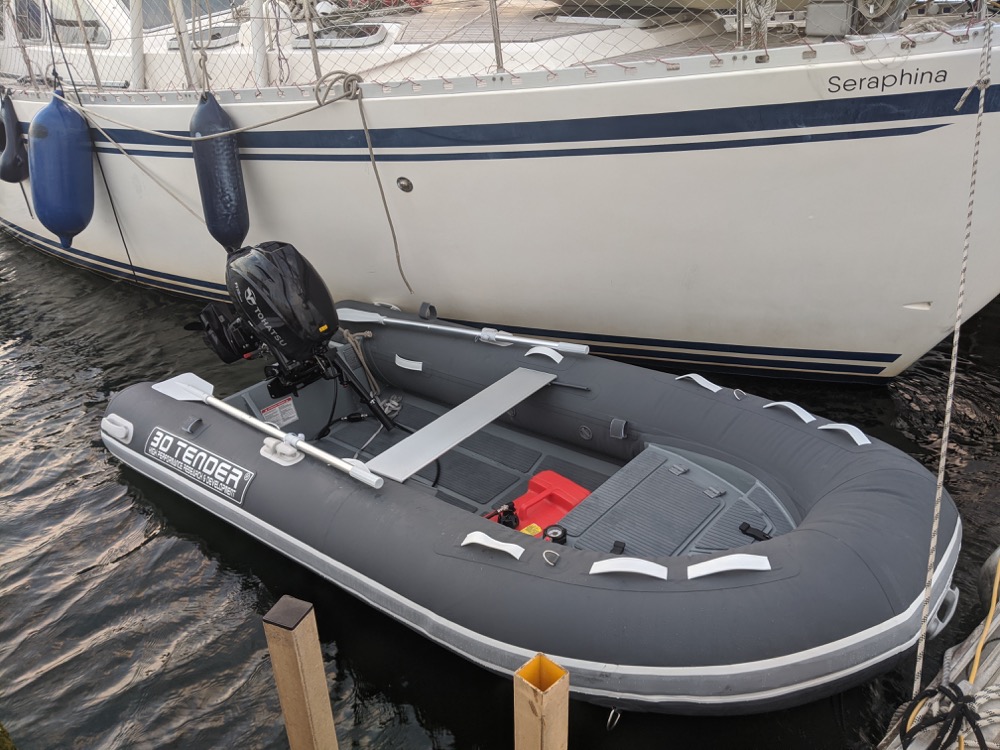
With the 20HP, she cruises happily around 16kts with a top speed of around 20kts at 1/2 power with one person and 3/4 power with two people. With 4-5 people its still planing though I haven’t tried to speed test with a full dinghy of people.
We could get a deeper pitch propellor and probably see a few more KTS but speed wasn’t our ultimate goal. 20kts is plenty.
Weight & Size
I did start to try to pull the dinghy up with the 20HP onto our lightweight davits but they didn’t look happy so I stopped. We have once pulled the RIB with the big outboard onto the foredeck when we needed to move very quickly and the weather wasn’t favourable.
We generally don’t do this for no other reason than our outboard stows neatly under the back of the dinghy on deck. If the outboard is still on sheets can get caught when we tack.
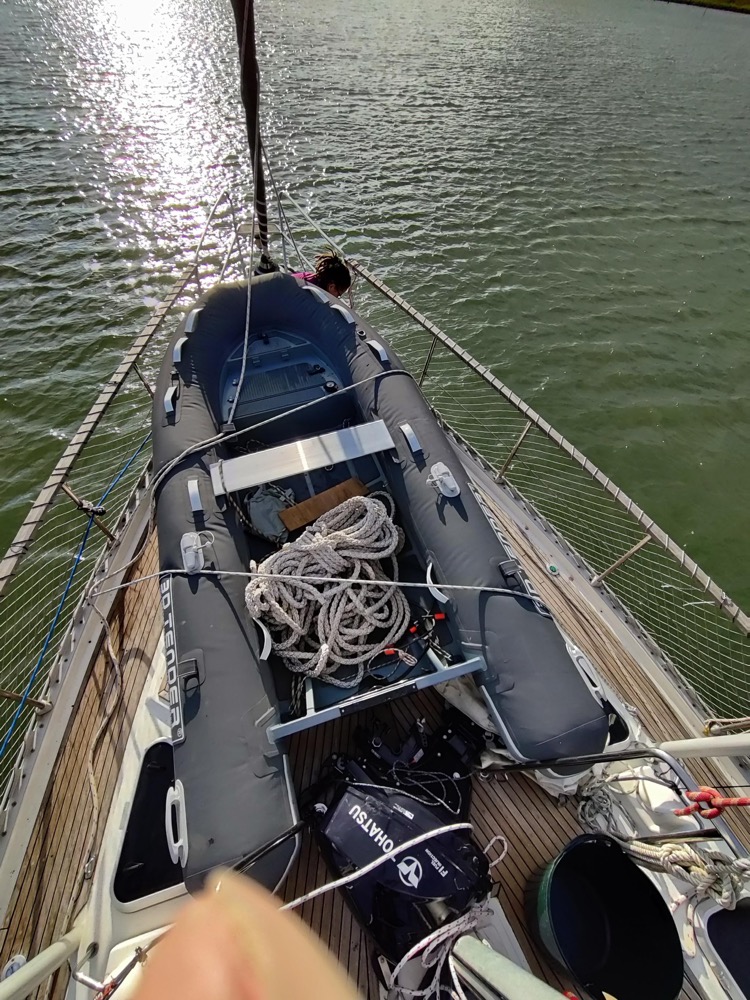
In theory the 3.5HP 17KG (37.5lb) outboard + 46KG (101lb) dinghy + small anchor 6KG (13lb) = 69KG (152lb) so should be fine to pull up on the davit.
However, I haven’t had a chance to try. With no outboard on I can, with a bit of effort flip the dinghy on my own. Most of the time I use halyards to lift and manoeuvre it around.
Bow locker
In the bow we have a sizeable bow locker that happily fits a 6KG bruce anchor. Under the bottom of the locker is the hull so it can get bit wet in there.
With this in mind, anything you store here needs to be in a dry bag. You also need to be careful not to put anything too small in there as it can go under the floor never to be recovered.
The catches on the locker are plastic so aren’t going to protect valuables but would probably be ok to stop opportunist theft of a lifejacket or 5L (±1gal) fuel can.
Overall the locker has been a big win. Keeping the anchor from moving around the dinghy while in various conditions has been invaluable.
Fuel tank
Another bonus on the ‘ultimate’ RIBs was the fuel tank. Given our plans to go hopefully go sailing to quite isolated places the ability to easily store an extra 20L (±5 US Gal) was very attractive.
It does however have some pitfalls…
Firstly, when you get the dinghy you have to install your own fuel line. Not the end of the world but given the very lightweight mousing string provided it was a little harrowing.
Secondly, the fuel cap is hard to put on because the gauge stem is too long for the tank, making it hard to thread the cap (the gauge broke in the first year rendering the long stem fairly pointless).
Finally, as the dinghy is already front heavy, if there’s fuel in the tank then it makes it more challenging to lift the dinghy onto the davits or deck.
Lifting points, handles & seat
There are four well placed lifting points, five if you could the one in the locker but I’ve never found a need to use that one.
Handles are sensibly placed so that your passengers have something to hold onto as you speed into the distance. They’re very well attached and well made. The oarlocks sometimes feel like there in the wrong place when I’m helming but they’ve got to go somewhere.
We damaged one a little by leaving the dinghy rubbing under a pontoon for a week but that’s definitely on us.
The center seat is a little average in construction. Twice the clamps that hold it to the tubes have broken and I’ve had to use larger screws…next time it happens I’ll probably just chuck it as it doesn’t add much value.
Optional wheels
These were pretty expensive, there were no photos of them and I almost cancelled them.
I’m very glad I didn’t.
They’re significantly more industrial and better designed than anything I’ve seen in a chandlery and much better. They can be easily removed and fold down much easier in shallow water than wheels that have arms that are too long.
As a downside, unfortunately even if you order the wheels with the dinghy they arrive separately and you’ll have to fit them yourself. This isn’t too hard but read the very sensible instructions first and make sure the wheel rotates when it’s locked down.
Oars and pump
The oars are nothing to write home about they’re simple and do the job.
The dinghy pump a little disappointing.
The pump itself is good however the attached tube and clamp to hold it closed both failed. The tube has a split that I’ve had to duck tape and the clamp quickly broke so the pump won’t stay closed.
Conclusion
While this dinghy is quite expensive, relative to its competitors the hypalon one is not the most or least expensive out there.
The build quality of the dinghy is high despite some of the pitfalls so I’d still recommend it against the other options. It’s provided us with a platform to get to places we wouldn’t have otherwise with an inflatable only dinghy and has been great moving the full crew on and off the boat.

